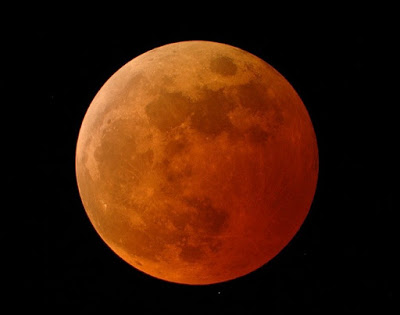Chances are, that if you live in rural Western New York you’re a backyard astronomer of sorts. You might find yourself outdoors on a cool, clear winter night marveling at the countless stars in the heavens. In the summer months, you probably sit around campfires in your backyard yelling “did you see that?!” to your family and friends whenever a meteor streaks across the night sky.

There’s something innate, some primeval, about the interest, the love affair, with the nighttime skies. The universe is fascinating, awe-inspiring, and even relaxing – after a day of hustle and bustle and going in a hundred different directions, it’s always comforting to look skyward, see that vastness and realize that we and our human experiences are but tiny, inconsequential blips in the whole scheme of things.
We WNY backyard astronomers like to maximize this appreciation, because, far too often, Mother Nature doesn’t cooperate with us. The Niagara County and Erie County skies, especially, are some of the cloudiest in the United States, thanks to the Great Lakes and the prevailing southwesterly winds that drive the moisture from Lake Erie before it hits a brick wall of cold air created by Lake Ontario, creating the abundant clouds.
So, any time that we are blessed with a clear night, we like to take advantage of it. And, we always hope that it happens when some celestial event is taking place. To help you plan for that in 2019 — and to give you the signal to start praying to God to ease up on the cloud machine a little bit — here’s a look at some of the nighttime (and even daytime) sights on tap for next year…
Eclipses
We have just one eclipse on the calendar for 2019, but it’s a really good one.
It’s been almost three-and-a-half years since we’ve been able to see a total lunar eclipse, but we will be blessed with one early in the year. It will occur on the night of January 20th, going into the early hours of January 21st when we will have a full moon. That’s a Sunday night, but kids and anyone else who has Martin Luther King Junior Day off will be able to sleep off the late night on Monday morning.
The eclipse will begin at 9:36 PM and take its sweet time before hitting total eclipse – and a red moon – at 11:41 PM. That will last for an hour before gradually reverting back to the full moon just before 3:00 AM.
If you set your alarm to wake up in the middle of the night to see it, you can’t go wrong with a midnight wake-up call. It will be a magnificent sight for sure.
Northern Lights
The aurora borealis or northern lights are more abundant when the sun’s face is covered with sunspots and it is emitting all sorts of flares and other solar energy. In recent years, the sun hasn’t been too eventful as we are on the bottom of the 11-year sunspot cycle — and this past cycle was somewhat of a dud to begin with. Some space weather enthusiasts believe that it might even be something worse than that recurring cycle’s trough and we might be heading into a prolonged period of a quiet sun.
Either way, the northern lights won’t be very common — you might even call them downright rare — for our latitude again in 2019 (we aren’t as lucky as northern Canada where they are bathed by the green glow most nights). In 2018 there were two aurora events that were just visible from the Lake Ontario shore and we might see more of the same in 2019 unless the sun wakes up and belches some energy our way.
If you want to know when you have a chance, a great tool is the aurora oval (updated every few minutes) on the left side toolbar of the website SpaceWeather.com. If the green or red hue takes over or comes close to the US-Canada border on that map, it’s time to get outside and look.
Comets
December 2018 was kind of a letdown for stargazers because the darkest of WNY’s skies would have allowed you to see a rare naked-eye comet, Wirtanen, but it was cloudy for most of the month.
Will 2019 make up for that?
No. There are no naked-eye comets flying by this year and really none that could be found with binoculars either.
But, that could change. We really haven’t discovered every object that passes through the solar system and every year it seems like a few comets are discovered. Who knows, maybe one will be close enough to see. If that happens, I will pen a column about the comet and how to see it.
The best and brightest meteor showers
The Quantrids meteor shower will be the first of the year, peaking overnight on January 3rd. The Quantrids is unusual in that the peak is typically one night, while other showers can be at peak or close to peak over a few days. The crescent moon won’t dull the shooting stars too much, and the output will be good enough that you should see a tow or three dozen per hour. The best time to look is after nightfall towards the constellation Bootes.
The Persieds meteor shower never ceases to amaze, throwing some really bright meteors out there. 2016 was an outburst year, and I saw nearly 100 shooting stars over an hour and a half period on the peak night. While this year’s shower won’t reach such numbers, the Perseids is always a good show. Even on “lean years” you can see 30 to 60 per hour. In 2019 Perseids will peak overnight on the night of August 12th. On that night and the nights leading up to it (which still offer good meteors), the full moon will drown out the faint and mid-magnitude meteors. But, that doesn’t mean you shouldn’t look. Perseids has the tendency to produce incredibly bright massive fireballs – if you see one of them, you will never forget it. Trust me. Your best bet is after midnight. Look towards the constellation Perseus to see them in their full beauty.
December Geminids shower will take place under a crescent moon on the night of December 21st which will make for great viewing of this underrated shower which can throw out 50 an hour. It’s likely an underrated shower because of the weather conditions – the Perseids is easy to watch on a summer night. Geminids in December? You never know what Jack Frost will throw at you.
New moons
If you are serious about stargazing, you will so as I do and mark on your calendar every date on which there is a new moon. Basically “no moon,” the new moon ensures there is no moonlight robbing your skywatching experience, meaning you have full visibility of the stars, the Milky Way, meteors and more. You typically have decent dark sky viewing for three days on either side of the new moon.
On these nights, if you live in the city, suburbs, or village, you should make it a point to get as far away from city lights as possible and maybe book at stay at Allegany State Park or camp at any of the numerous makeshift campsites on state land in Allegany County. If you think you see a lot of stars in rural Niagara or Genesee Counties, they are NOTHING compared to what you can see near the Pennsylvania border where the vast umbrella of city lights are gone.
New moons will occur on Jan. 5, Feb. 4, March 6, April 5, May 4, June 3, July 2, July 31, Aug. 30, Sept. 28, Oct. 27, Nov. 26, and Dec. 26, 2019.

+Bob Confer is a Gasport resident. His column, Exploring the Niagara Frontier, is published every Thursday on All WNY News. Connect with Exploring the Niagara Frontier on Facebook for conversations about nature and the outdoors in WNY.


